Throughout history, orchids have been a topic of keen interest among botanists, horticulturists, and collectors around the world. Their allure? Mostly their uniquely-shaped blooms, most of which look like something from an entirely different dimension.
There’s also something a little special about how orchids grow. Each species has its own “ideal” set of growing conditions and preferences, and even two individuals of the same species can differ. The fun of orchids is in the challenge; once you get the hang of them, you’ll end up with far more than you can count!
A Brief History of Orchids
Orchids call a very wide range of habitats all over the globe home, and this creates some obvious differences between species. Most orchids hail from tropical rainforests, but others originate in temperate rainforests, coastal highlands, and even at extreme elevations.
While most orchids are epiphytic, meaning they obtain most of their moisture from the humidity in the air, many are terrestrial, which means they grow in soil. Epiphytic orchids are more commonly grown by hobbyists and houseplant collectors, mostly because they’re easier to grow.
Some orchids prefer to be planted in a soil medium composed of small chunks of bark, perlite, and constituents like coco husk. Others will prefer to be planted in moss, or, in rare cases, outside of any growing medium.
There are also species of orchids that are either endangered or are simply incredibly rare. These are usually poached and sold illegally, which only endangers them further. However, there are tons of species out there that are bred in captivity, and are therefore perfectly fine to purchase and grow at home!
Basic Orchid Care
Most orchids need some basic shared degree of care. Factors like light requirements and watering schedule may differ between species, but there are some general rules you can follow to keep a common orchid alive.
Orchids need water in order to survive. Depending on the species, some like to be relatively dry between waterings, while others prefer to stay damp most of the time. Occasionally, you can get away with keeping multiple different species on the same light and watering schedules, given that they’re close enough in phenotype to tolerate the same general parameters.
In addition to regular care and routine maintenance, orchids need to be fertilized every so often to continue to grow to their full potential. A great rule of thumb if you’re not sure how often to fertilize an orchid is once every six months with orchid-formulated fertilizer, at half the strength it comes in (diluted with water).
Almost all orchids need to be planted in a special type of pot that allows for ventilation and aeration of the roots. Airflow is a key factor in preventing root rot, which is very easy to initiate with orchids. Most orchid pots feature slots or holes that promote airflow.
Check out each orchid type below to learn more about each of them, how to care for them, and how to pair them with other orchids. You might be surprised to learn that some orchids that are known to be “difficult” are actually quite easy to grow!
20 Types of Orchids to Keep as Houseplants
Now that you know more about orchids in general, it’s time to get down to the individual different orchid species. Each species is unique in its own way, which makes it even easier to find one that you like that will grow well in your space. Here are the 20 most common types of orchids and a little bit about each of them.
Phalaenopsis

This species is definitely the queen of grocery store orchids. These guys are purchased far more than any other orchid species, and are frequently used to decorate offices, restaurants, waiting rooms, and doctor’s offices. Its origins are a far cry from the windows you often see them in, though; phalaenopsis orchids are native to tropical Southeast Asia.
This is a great example of an epiphytic orchid. Since phalaenopsis orchids absorb most of their water from the air and grow on trees attached to bark and lichens, they don’t like to have soggy roots. This is one that does best in moderate indirect light, and with a day of dry bark between light waterings.
Never let water sit in the bottom of this orchid’s pot. Within days, you’ll end up with a root rot situation that these orchids can be very susceptible to. Root rot is especially hard to reverse in orchids like this one, and it can take months to see a full new set of roots.
Oncidium
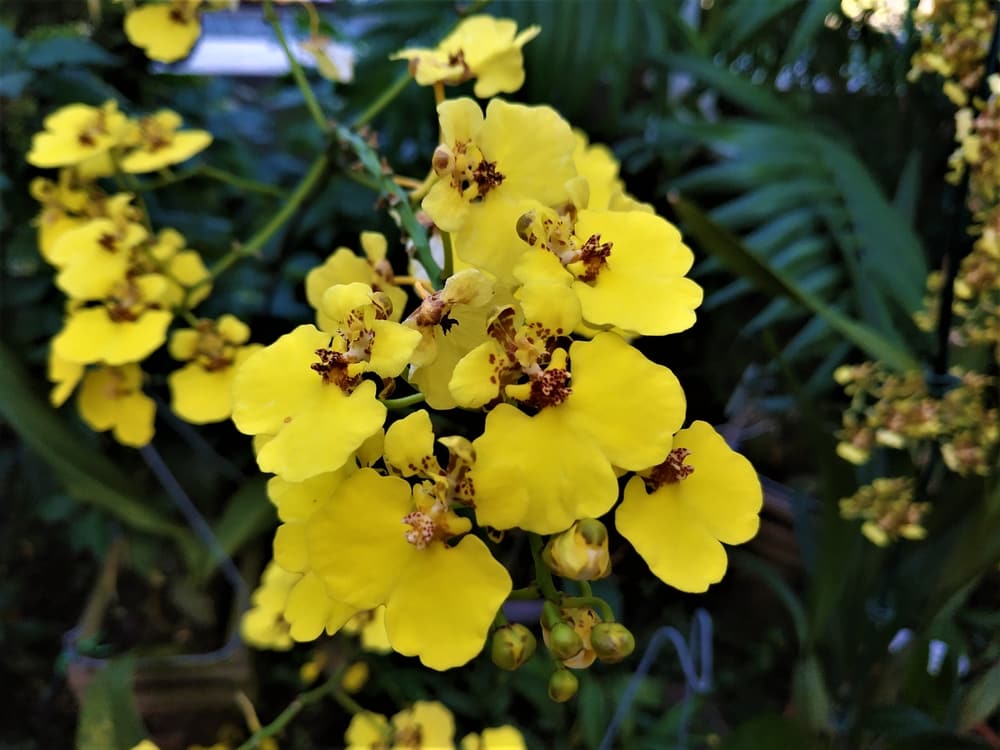
Oncidium is a very bright species that has big, showy clusters of brightly colored blossoms when it blooms. The rest of the year, it retreats into its foliage of strappy green leaves and interestingly-shaped pseudobulbs. These pseudobulbs grow in clusters, and young pseudobulbs grow off of older ones.
Being such a unique-looking plant, oncidium orchids are fun to grow at home. They’re easy to care for, as well; it’s hard to overwater a well-draining oncidium pot, and they like any mixture of moss and orchid bark.
Oncidiums do like a brighter setting, so be sure to provide bright, indirect light all day. A spot across the room from a window may not cut it, but near a bright window protected by a sheer curtain is ideal. Don’t repot these too often, as oncidiums like to be a little cozy in their pots.
Dendrobium
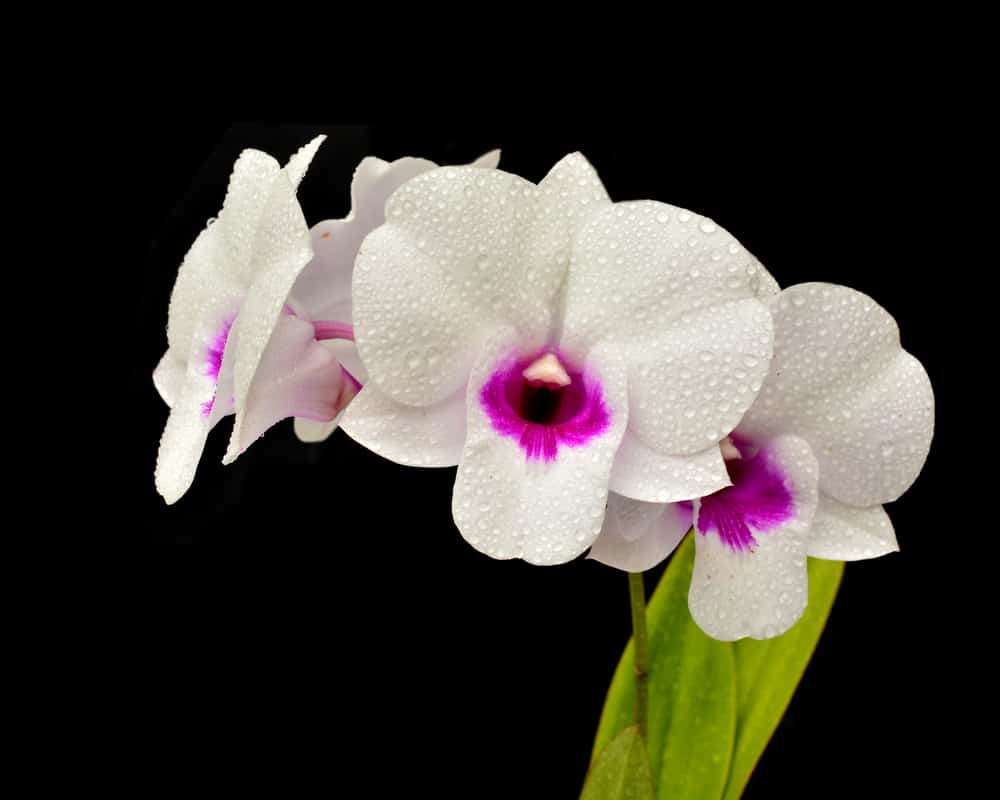
Another keen epiphyte, dendrobium orchids do best in a mixture of bark and perlite. Since most dendrobiums like slightly lower light levels than other orchids, they also make a great mounting candidate; that is, mounted to a tree or other wood fixture. However, don’t skimp on the moisture with this one.
Since dendrobium orchids grow relatively quickly compared to other species, they need water constantly. The roots don’t like to be drowned, but they do like access to humidity, which can be achieved using a humidifier or a tray filled with pebbles and water just beneath the pot.
Their blooms come in a very wide variety of shapes and light, pastel shades, with some even growing in clusters rather than along stems. However, these blooms don’t last long without water and fertilizer. After blooming, remove spent stems from their respective stalks at their bases.
Cattleya
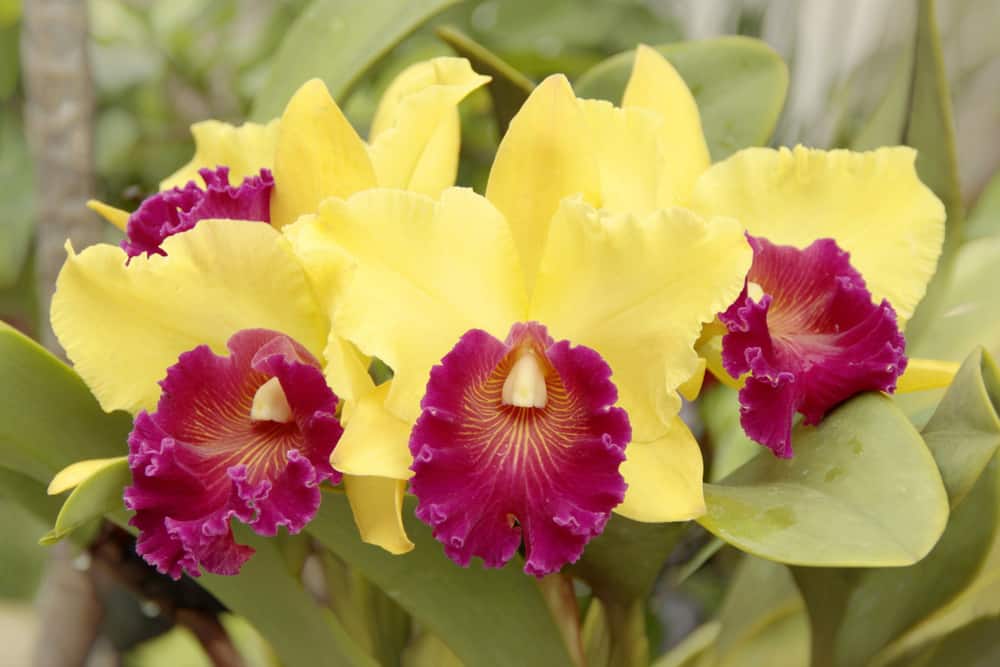
As one of the most sun-loving species of orchids, cattleya orchids need plenty of light throughout the day. Their requirements are pretty high- 3,000 foot-candles of light for at least eight hours per day- which makes them a little tricky for someone in a darker climate to grow. Artificial lights are usually the best way to go with these.
Of course, high light requirements are often paired with other details about how to care for an orchid. Cattleyas don’t particularly like wet feet, and they like to dry out completely between watering. They also aren’t fans of mineral-rich water; the purer it is, the better. Cattleyas also like it on the warmer side of things, no cooler than 70 degrees fahrenheit.
Their extraordinary blooms are most often associated with tropical getaways like the Hawaiian Islands, where they’re bred and cultivated in mass volumes. Some of the most extravagant hybrids come from this state, ranging from bright pinks and oranges to yellows, red, and even purples!
Cymbidium
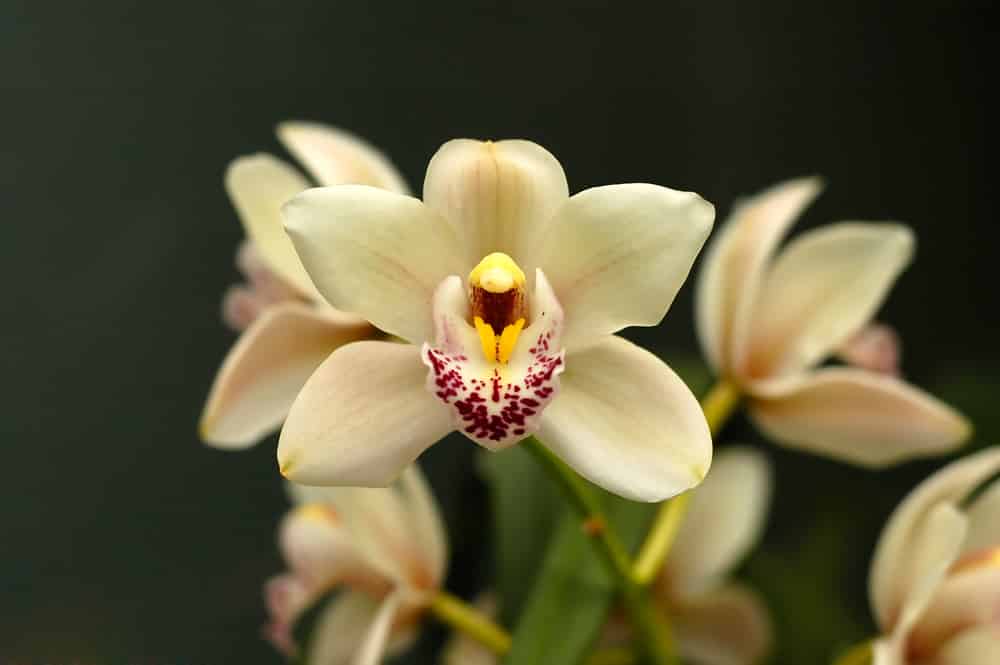
Commonly known as the “boat orchid” due to the unique, cup-shaped blooms, cymbidiums are a cool-growing, primarily terrestrial orchid. These orchids have their own preferences, too, including growing in relatively tall pots compared to the short ones that other orchids generally like.
Cymbidium orchids are also well-known for their temperature ranges. Most cymbidium orchids like to go through a sort of dormancy period in winter months, when temperatures run cooler inside than in warmer months. These temperatures vary depending on the variety; however, these changes are an adaptation to the highland habitats these orchids are native to.
As far as water goes, cymbidium orchids like to have constant access to moisture, but like most orchids, they don’t like to sit in it. It’s best to stick to pots that have great drainage and water often, rather than to plant a cymbidium in a pot with no drainage and water less.
Encyclia

A very interesting and complex orchid, encyclia has a long horticultural history. Often dubbed the “cockleshell” or “octopus” orchid, the blooms of this species often live up to its nicknames. These orchids aren’t scented, but they truly are a gem.
Encyclia orchids can be tricky, because so many different types of them come from wildly different regions of the world. Some are cool-growers, while others like to have substantially different seasons. For this reason, it can be hard to gauge which season is the growing season.
Almost all encyclias are full light lovers. They like at least eight hours of bright, indirect light each day, and some can even tolerate direct light so long as they get enough water and evening shade. Use smaller bark for this one, which helps retain more moisture around the roots. Encyclias need even more light than cattleyas do!
Zygopetalum
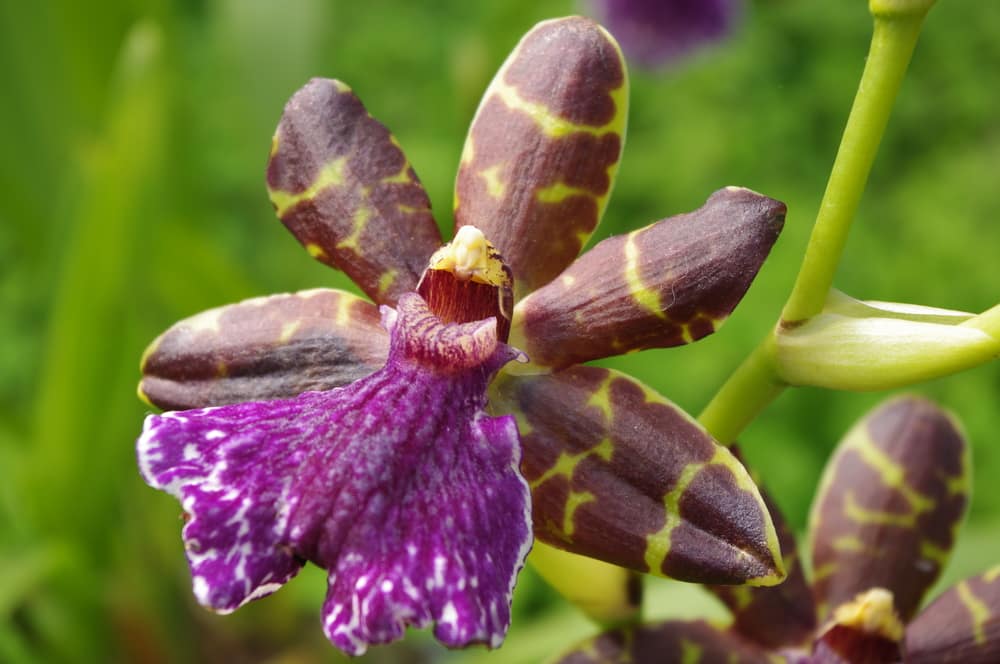
This species is actually relatively small, with only about 15 subspecies known to date. Most of them originate from regions near the equator, but don’t be fooled; cooler temperatures and lower light are what these guys are looking for. This is an orchid that grows from pseudobulbs which stem from a rhizome in one direction.
Zygopetalums are a terrestrial orchids, which means they like to be potted in a medium that’s more like natural soil, with smaller bark and moss throughout. While they won’t tolerate a potting soil for tropical plants, they can survive in older bark that’s been broken down a bit.
These orchids hate drying out. If they do dry out during their blooming season, their flowers fall off quickly. However, zygopetalum does exceptionally well in self-watering type pots, especially those that have a large reservoir underneath the net pot. The airflow allows the orchid to pick up as much moisture as it needs without staying abundantly wet.
Miltoniopsis
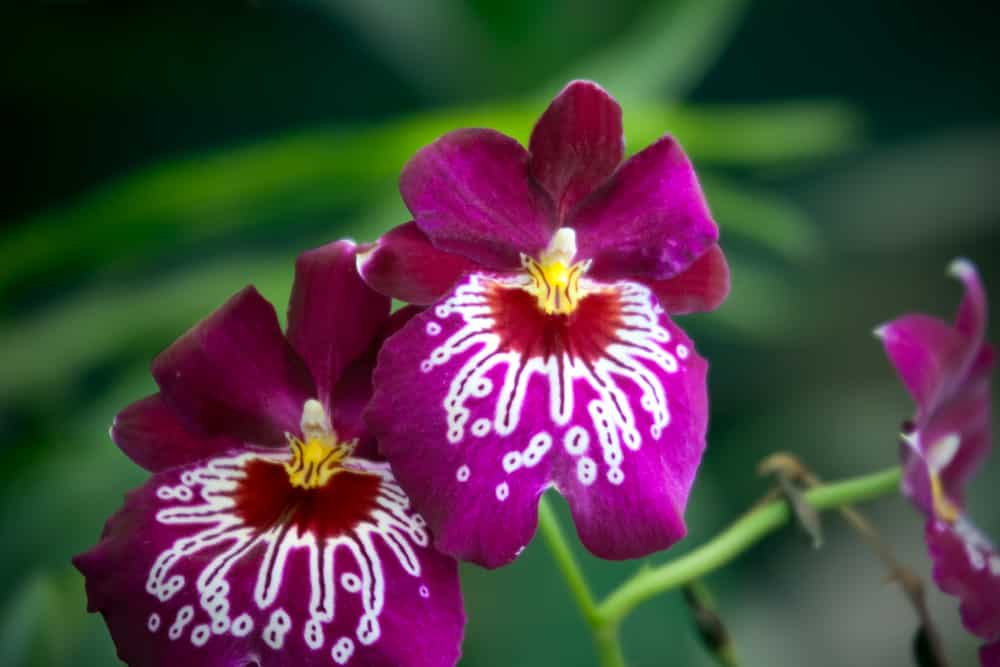
Found only in the higher altitudes of Columbia, miltoniopsis is a very particular orchid with a narrow range of tolerable growing conditions. That being said, the average indoor environment that humans enjoy is enough for these guys. They like humidity, but won’t die without it.
Known for its adorable pansy-esque blooms, the miltoniopsis family all share the same general flat-faced petal look, which only further adds to the allure of growing these orchids indoors. Most miltoniopsis orchids range from pinks to purples and reds, with some white coloration and variation amongst specific subspecies. Some are even scented.
Miltoniopsis orchids have lighter colored leaves that make it difficult for them to bear much direct light. As a result, they need to be protected from the sun during the brightest parts of the day, and should only be watered once the bark is nearly dry. Water just enough to wet the bark, but not enough for water to drain out of the bottom of the pot in any great volume.
Paphiopedilum
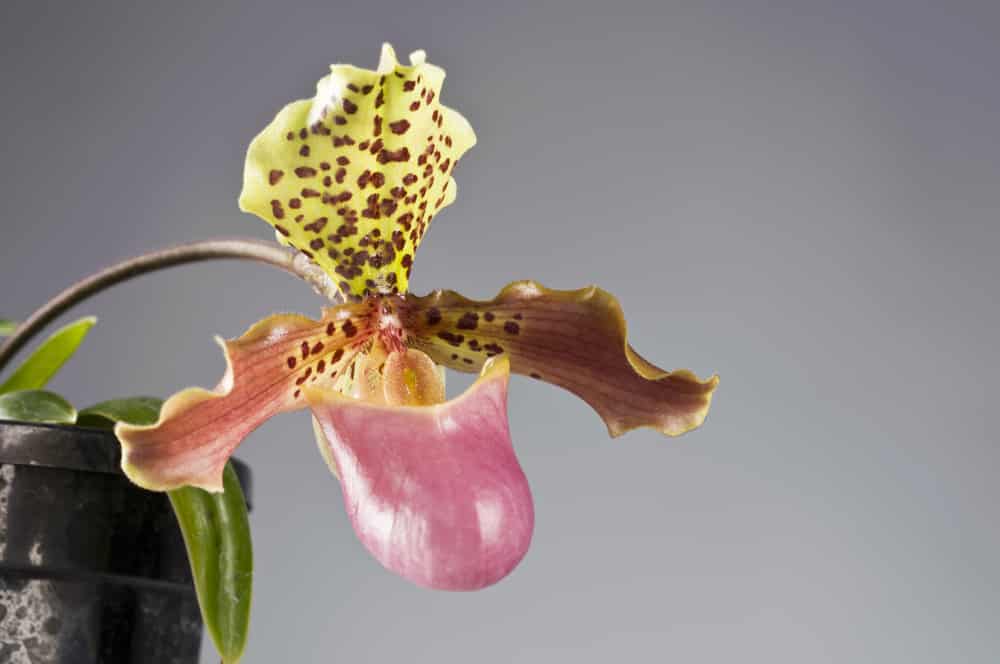
Some of the craziest and most stunning orchids belong to the paphiopedilum family. Some paphiopedilums, like the Maudiae types, even feature mottled leaves to keep them interesting even out of bloom. These orchids are most commonly cool-growers, and like to have a period of 65-70 degree dormancy each year.
The blooms on these orchids are almost alien-like in comparison to other orchid species. Some subspecies bear blooms that have bubbles, long tendrils, and even delicate hairs along the edges of the petals and sepals. Their ideal growing conditions are moist and moderately warm.
As most of these orchids are better suited for lower light levels, you may be tempted to place one farther away from a light source than other orchids. This is one of the most common reasons that paphiopedilums die. They also need constant moisture, preferably in a mixture of bark, peat, and perlite.
Vanda
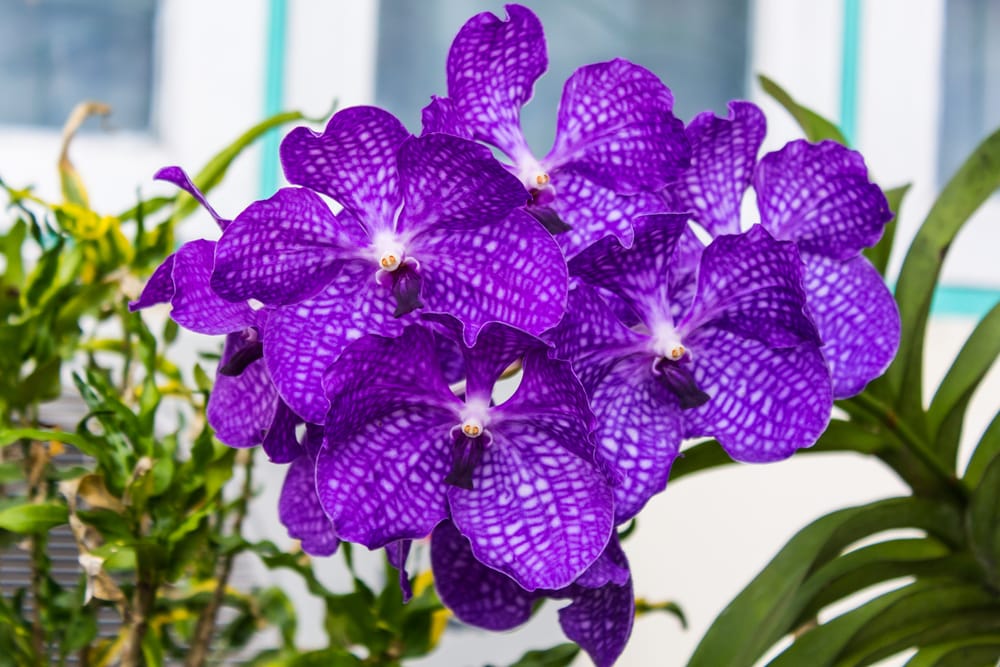
Vanda orchids are a classic favorite for those who like to mount and hang orchids. They grow from a single stem, which sprouts leaves on two sides. When they bloom, their stems emerge from a top set of these leaves.
Vanda blooms come in a variety of shapes and colors, but among the most popular are the indigo varieties, which are as close as orchids can get to a “true blue” hue. Some vanda orchids can grow huge, long clusters of blooms that last, while others produce just one or two blooms from each stem.
These orchids demand a lot of light, but can’t tolerate a constant, all-day burn. If its leaves begin to look pale, it’s time to dial back the rays. Humidity is a vanda orchid’s best friend, so of course, self-watering pots, humidifiers, and even trays of wet pebbles can do these orchids a ton of good.
Maxillaria
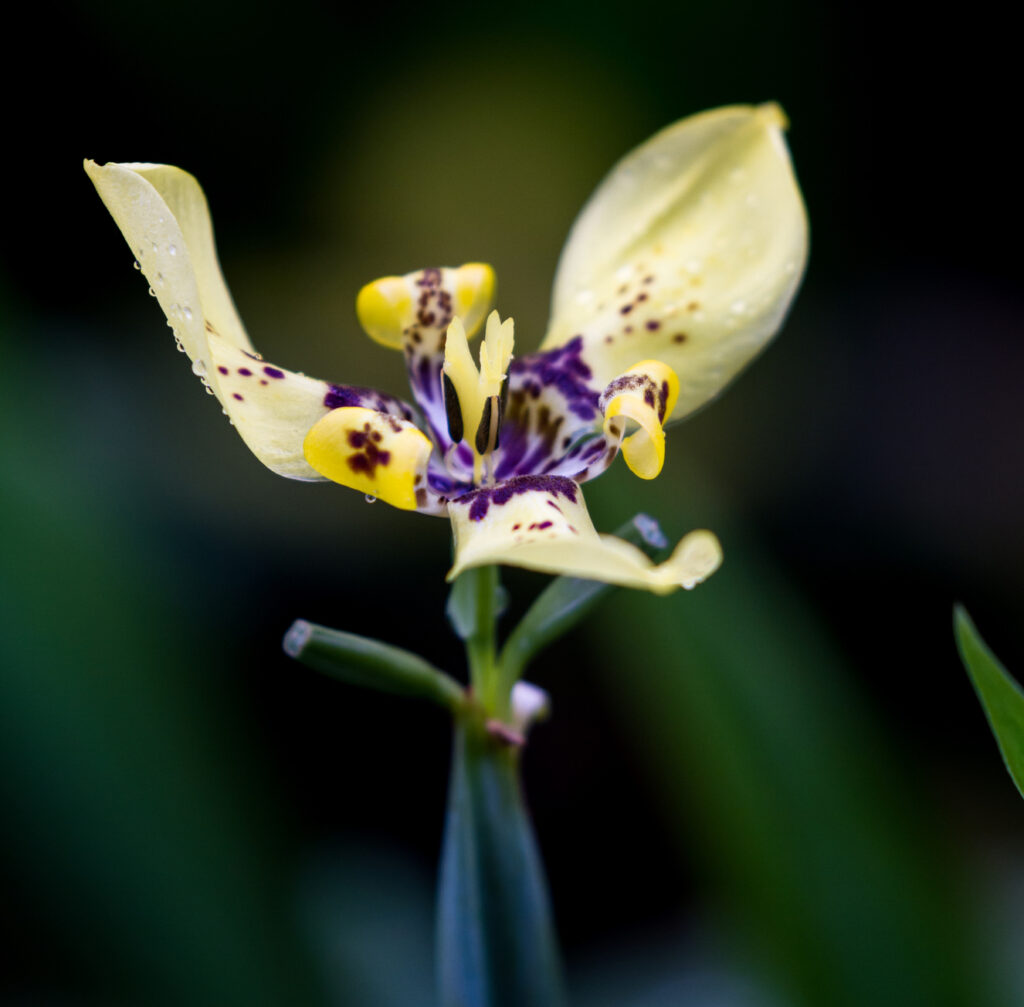
The triangular-shaped blooms of this orchid are a dead giveaway to their family. Maxillaria orchids are very unique in that they all share the same three-petaled look. While some subspecies, such as tenuifolia, are highly fragranced (in this case, like coconuts), others give off a more mild scent.
These orchids are very forgiving, which makes them perfect for beginners. They prefer high humidity, moderate light, and even mid-range temperatures. Hardy from 55 to 70 degrees, maxillaria orchids are great for well-lit offices and shadehouses.
Typically, this species can tolerate a little over or underwatering here and there, but prefer to keep a regular watering schedule. It’s better to water a little more often than to water too much, not often enough.
Epidendrum
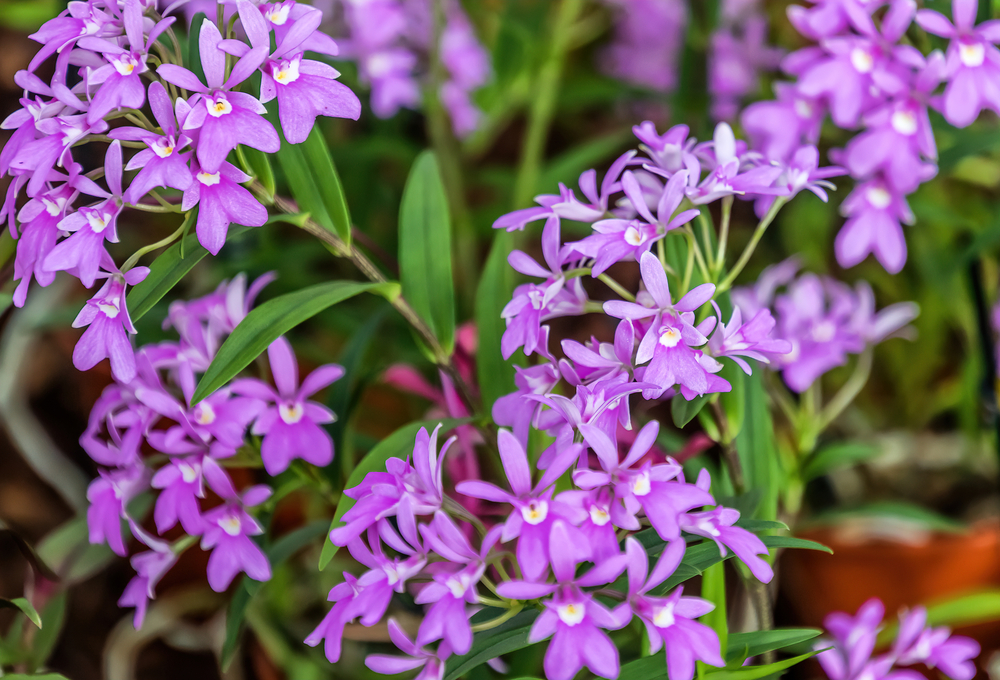
This is a true monstrosity of a genus. Epidendrum is one of the biggest orchid genuses out there, and subspecies can range from very small to very tall, depending on the region they originate from. They can also be a little tricky to grow indoors.
For homes with lots of light, this orchid will do well. However, most often, epidendrums don’t get enough sunlight to bloom as often as they’d like. While you shouldn’t place one of these orchids in a bright window with direct exposure, they do need quite a bit of light; opt for artificial lighting if you don’t have many sunny windows.
Epidendrum orchids, like dendrobium orchids, prefer to stay damp as much as possible without downright sitting in a puddle. Their rhizomatous structure allows them to soak up and hold moisture, but they don’t like to dry out entirely. Flowers can range from tiny clusters to big, bold blooms atop thick stems.
Psychopsis
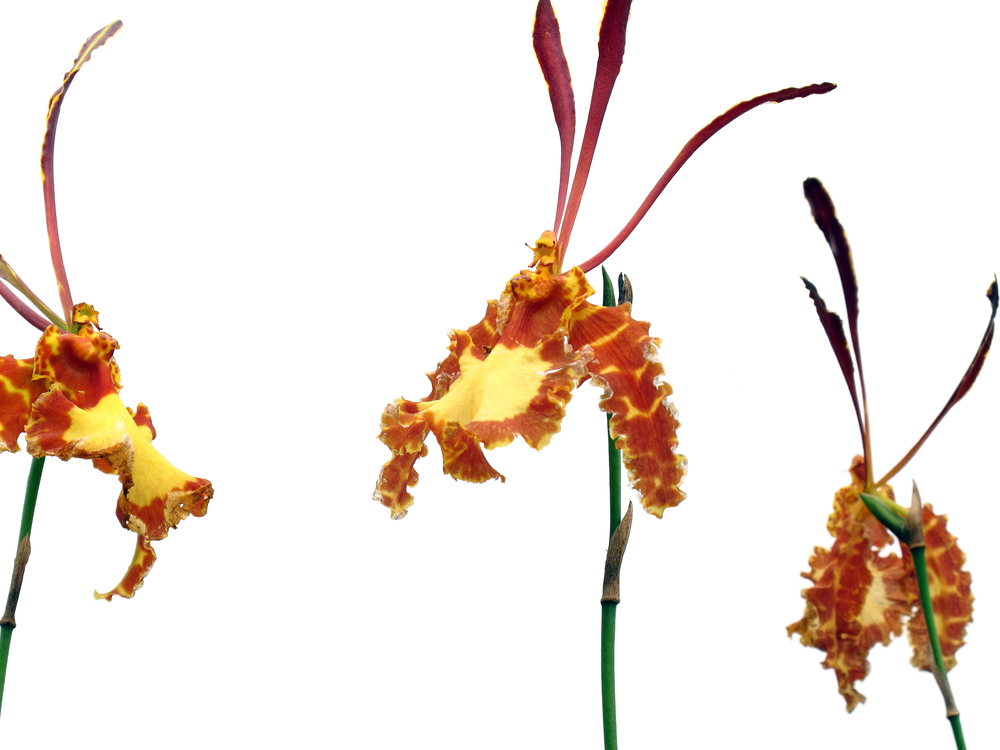
If you’re lucky enough to have been introduced to this genus, then you already know just how fun they are to grow indoors. A speck of a genus, psychopsis only has a handful of subspecies, all of which bear the same general resemblance to one another.
These orchids feature speckled blooms that pop with color. While they don’t mind a little dry spell between watering, they shouldn’t be left to dry for too terribly long. Psychopsis orchids prefer humidity over actual water, so providing them with some mist every couple of days will win them over.
Most of the time, these orchids aren’t picky about temperature. If you like your home a little warmer, they’ll do just fine, so long as there’s enough humidity present to make up for the heat. Plant in well-draining bark with some larger perlite chunks for a good mix of moisture and airflow.
Brassavola

If you’re a scented orchid fan, this one’s for you. Brassavola are best known for their intense fragrances, especially during the dark hours of the night. This strategy is an adaptation for moth pollination, and since moths are out primarily at night, this is when the fragrance really kicks into high gear.
Clusters of scent-infused blooms aside, brassavola is a very easy-going species that takes well to lots of different growing styles and mediums. It likes to be mounted, grown in baskets, and planted in soil alternatives such as leca. These orchids, like many others, like humidity, but not wet feet.
Brassavola orchids are slow growers, but their blooms can last for months at a time, which makes this species well worth the wait. When it comes to light, there’s hardly a limit to how much you can give. If you see any sun spots or burning, simply move the orchid just out of its previous spot away from the light source.
Cycnoches
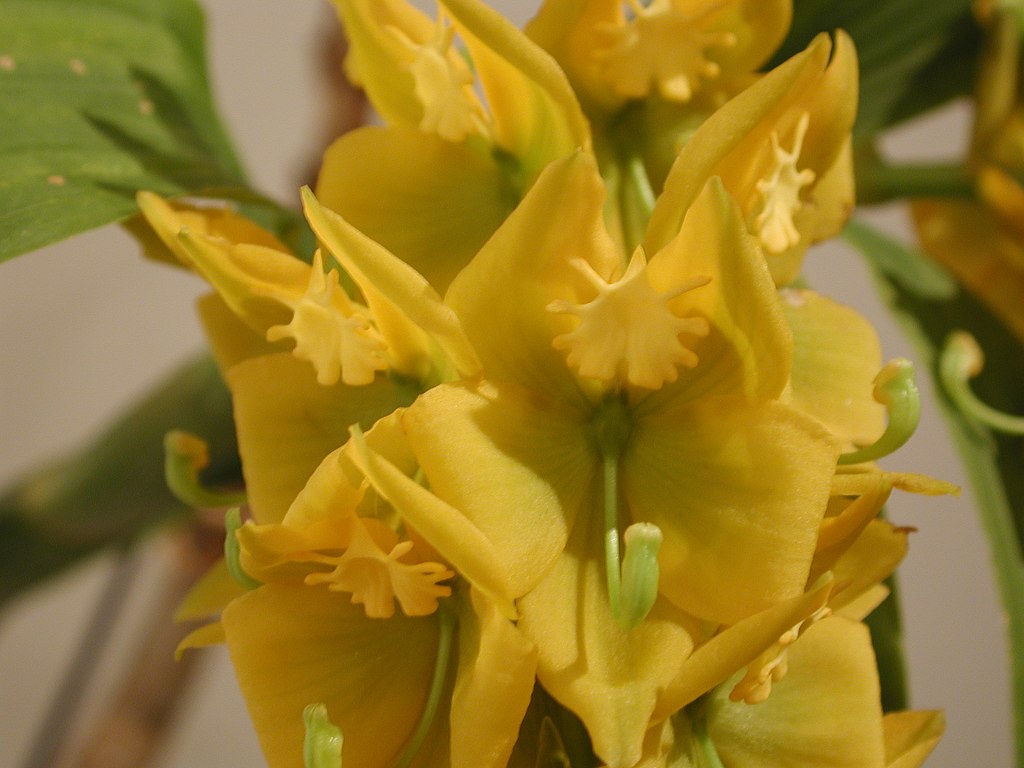
Cycnoches is such an interesting orchid because unlike most everything else in the orchidaceae family, it actually has separate male and female flowers. This is such a revelation because we get not only one, but two of each type of subspecies. If you find a good year-round spot for one, it’ll be happiest to be left there as long as possible.
Adding further to their weird factor, cycnoches orchids have an unusual foliage growth pattern. Rather than grow straight up or out, cycnoches leaves tend to grow with a drooping point somewhere around the middle of the leaf’s length. This is normal, but they shouldn’t look limp; that’s a sign of underwatering.
Speaking of water, these orchids don’t like to dry out entirely. Instead, allow them to become very faintly moist before watering again. They grow all year long, so water is important. Cycnoches orchids like to have moderate light, but brighter, indirect light during the spring will help them to bloom.
Catasetum
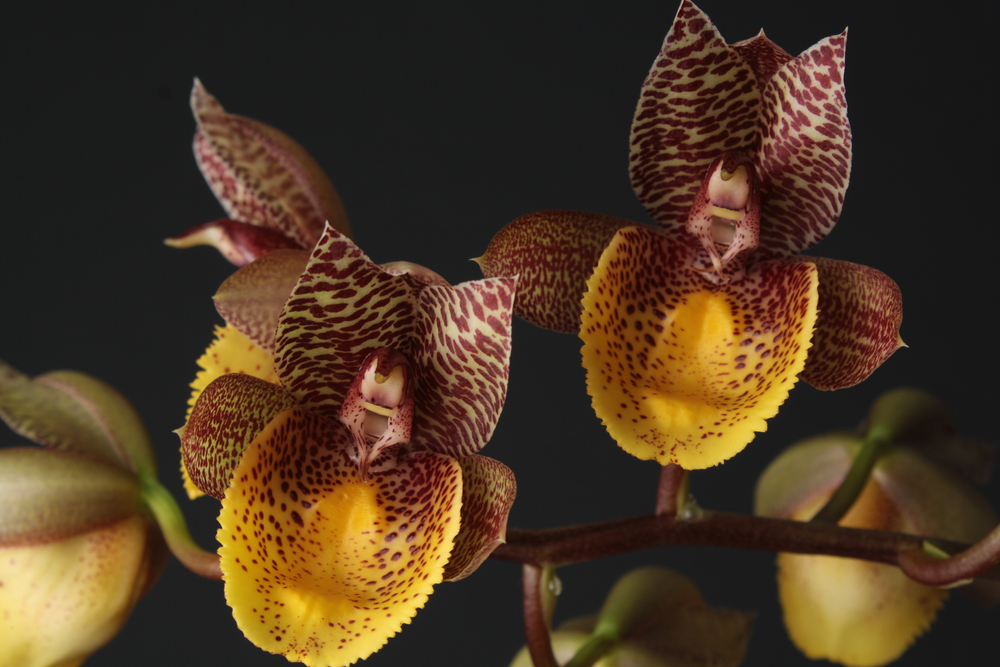
While we’re on the subject of separate male and female flowers, catasetum is another orchid that has this peculiar pollination adaptation. The male and female flowers look almost nothing alike, though you’ll still see the same colors in each bloom from the same plant.
Catasetum orchids are another species that like both warmth and humidity. They don’t tolerate cooler winter temperatures well, and do best in greenhouses or terrariums that are environmentally controlled. While they don’t need as much water as other orchid species, they do like moisture to be consistently available to the roots.
Their showy little blooms are some of the most prized in orchid horticulture, as some subspecies produce incredibly outstanding blooms that sometimes look like animals or objects. Intense hybridization has brought forth a ton of new and colorful subspecies, so keep an eye out for new hybrids hitting the market!
Stanhopea
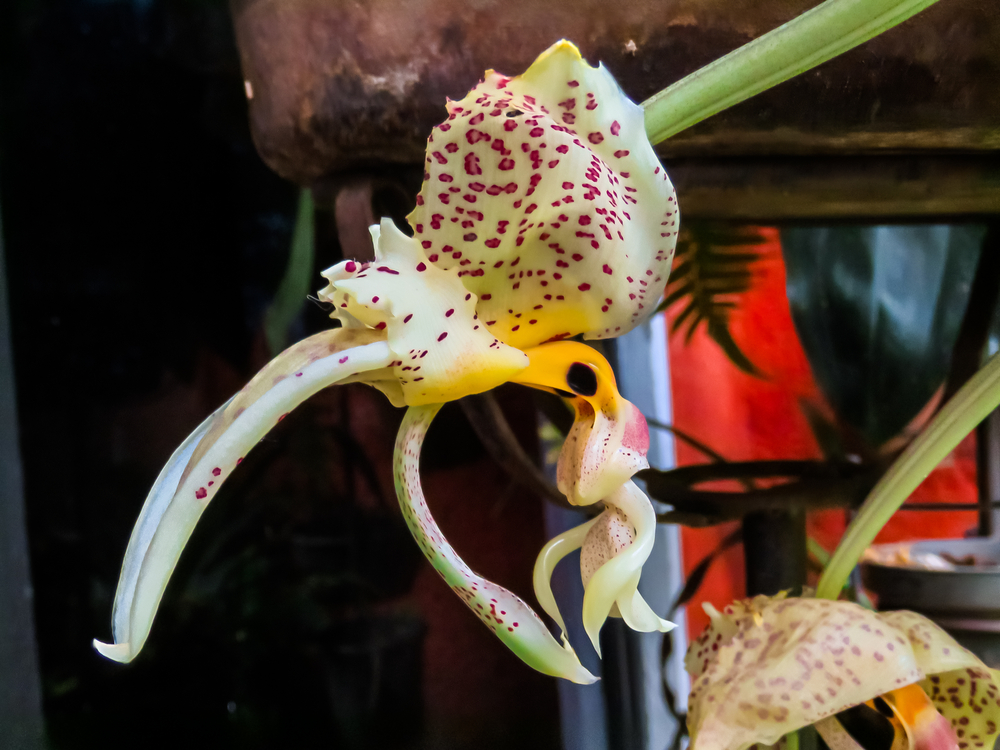
If you’ve never heard of this orchid, you wouldn’t be alone. Stanhopea is a less common orchid amongst the hobbyist population, but it should be a more popular option. This orchid is super easy to grow, doesn’t mind a wide range of temperatures, and produces some stunning blooms.
This orchid is a little different on watering preferences. During the growing season, it likes to have moist soil, but it should still be allowed to dry out just a bit between watering. However, during winter months when it isn’t actively growing, stanhopea should only be watered enough to keep the pseudobulbs plump and healthy.
The best part about these orchids is that they’re often highly fragranced. Their blooms almost always droop without staking (which looks fantastic in a hanging basket), and their bi-color patterns come in a huge variety of options. To promote blooms, offer very bright, indirect light.
Epicattleya
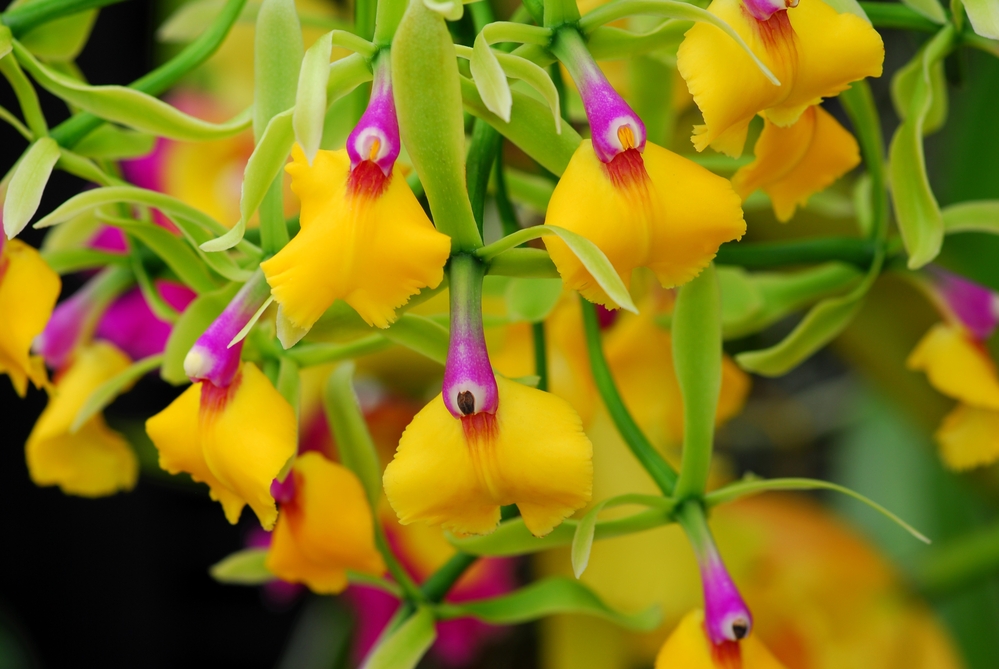
This very special hybrid is more than worth mentioning. Several epicattleya species are a long-time hobbyist favorite that are just too cool to resist. One epicattleya that stands out the most is Renee marquis, which is a tri-colored species with an unusually trumpet-shaped bloom.
This species grows in a reed-like manner, with tall stalks that grow their own stems and blooms. Being in the cattley family, it’s to be expected that epicattleyas hate wet feet. Keep them from sitting in standing water, and be sure to let them dry out entirely before you water again.
Try to keep this one in cooler temperatures, anywhere from 50 to 70 degrees, as it hates to be too warm or cold. It helps to mist the foliage routinely to maintain a bubble of humidity, which epicattleya orchids love.
Ludisia
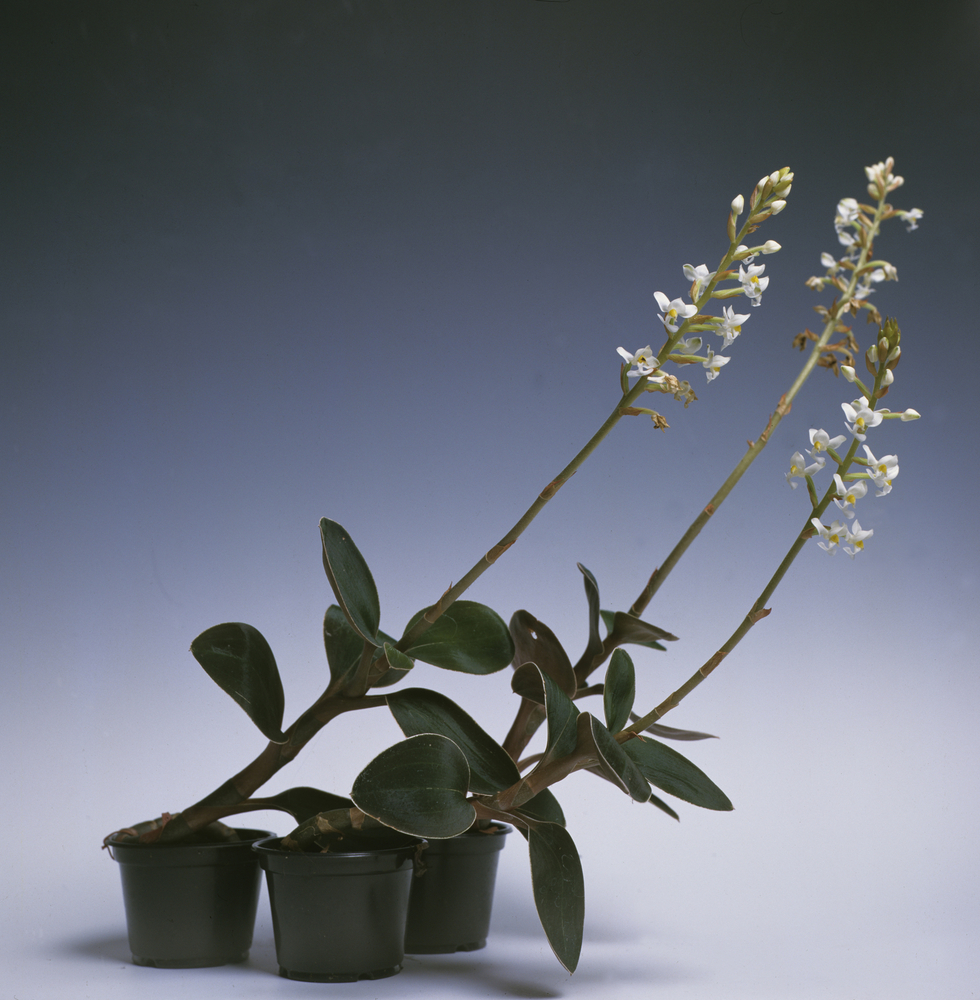
Often referred to as “jewel orchid”, ludisia is an orchid that grows solely as a terrestrial orchid. It’s accustomed to colder temperatures, lower light exposure, and finer soil. It’s all about the foliage with this orchid; the striped leaves are a deep emerald green with vivid maroon striping.
Though ludisia orchids do bloom, some growers prefer to cut the flower stalks back in order to conserve energy for foliage growth. These blooms are small, and are usually white; once you’ve seen them, the excitement tends to die off. However, they do grow well with common terrarium plants when planted as companion plants.
It’s best to avoid letting this orchid dry out; if the soil becomes dry, the orchid will begin to droop. While ludisia orchids like to be wet, they don’t like to be directly in the light. Medium light is plenty for these guys, because bright light can cause burn spots.
Lycaste
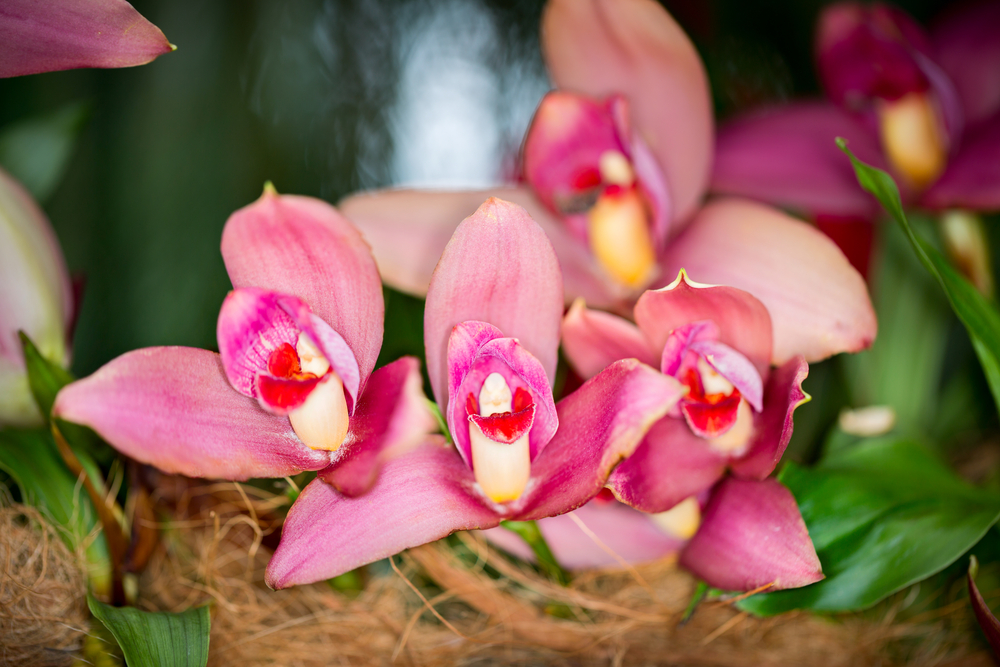
Lycaste orchids are a delightful, small species that feature the same triangular-shaped flowers as maxillaria orchids. Though they may lack the signature sweet scent that draws hobbyists to maxillaria orchids, lycaste orchids have a lot to offer.
The leaves of this orchid die back during cooler months, but return with a force come spring. It;s considered a fast grower, which of course demands plenty of fertilizer. Feeding every two weeks during the growing season is usually sufficient.
These aren’t picky orchids about light or temperature; they like to have access to bright, indirect light for at least six hours per day, and won’t fuss in temperatures as low as the mid-50-degree range. When leaves are present, try not to let the bark dry out between watering.

